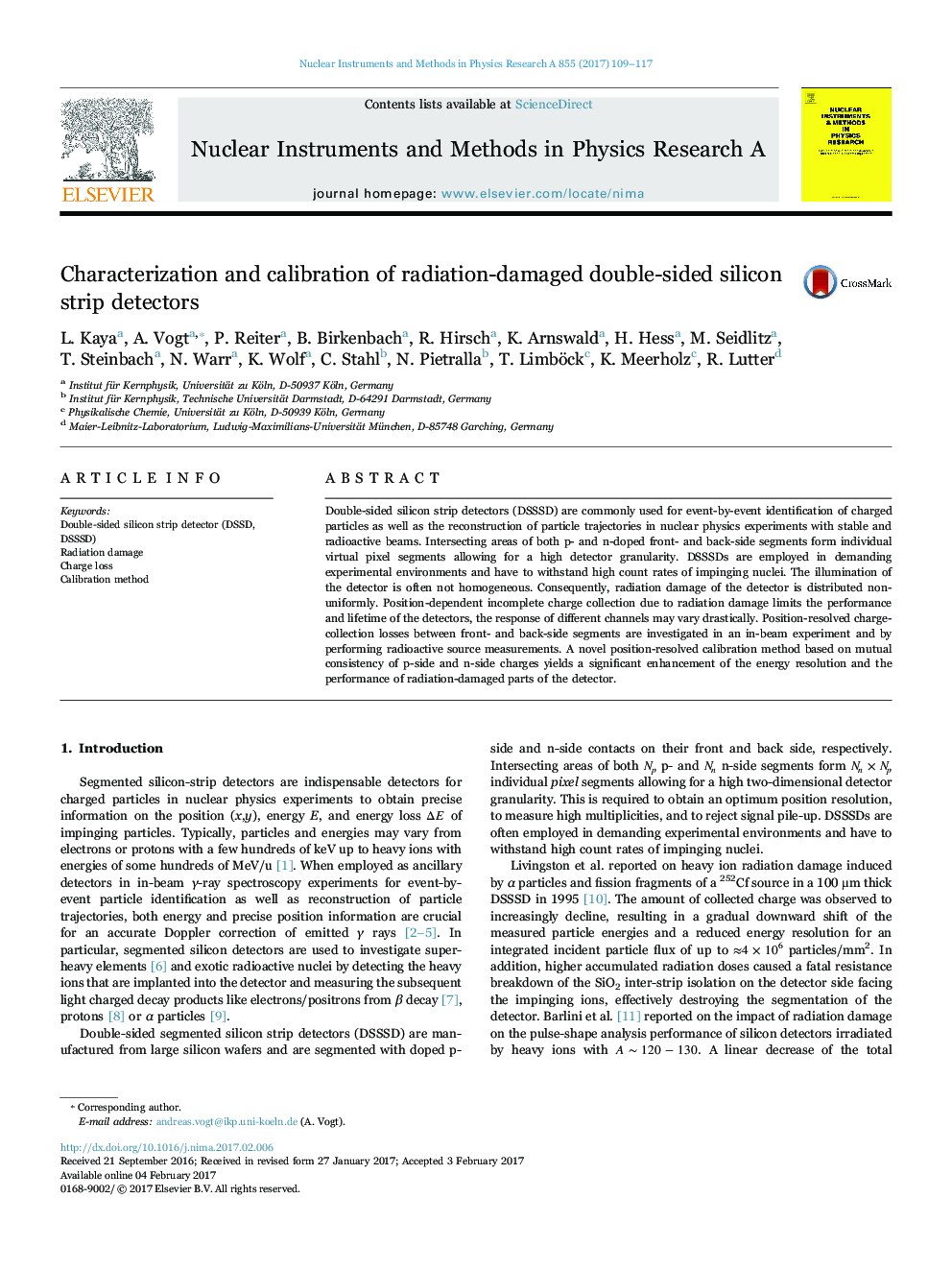| Article ID | Journal | Published Year | Pages | File Type |
|---|---|---|---|---|
| 5493388 | Nuclear Instruments and Methods in Physics Research Section A: Accelerators, Spectrometers, Detectors and Associated Equipment | 2017 | 9 Pages |
Abstract
Double-sided silicon strip detectors (DSSSD) are commonly used for event-by-event identification of charged particles as well as the reconstruction of particle trajectories in nuclear physics experiments with stable and radioactive beams. Intersecting areas of both p- and n-doped front- and back-side segments form individual virtual pixel segments allowing for a high detector granularity. DSSSDs are employed in demanding experimental environments and have to withstand high count rates of impinging nuclei. The illumination of the detector is often not homogeneous. Consequently, radiation damage of the detector is distributed non-uniformly. Position-dependent incomplete charge collection due to radiation damage limits the performance and lifetime of the detectors, the response of different channels may vary drastically. Position-resolved charge-collection losses between front- and back-side segments are investigated in an in-beam experiment and by performing radioactive source measurements. A novel position-resolved calibration method based on mutual consistency of p-side and n-side charges yields a significant enhancement of the energy resolution and the performance of radiation-damaged parts of the detector.
Related Topics
Physical Sciences and Engineering
Physics and Astronomy
Instrumentation
Authors
L. Kaya, A. Vogt, P. Reiter, B. Birkenbach, R. Hirsch, K. Arnswald, H. Hess, M. Seidlitz, T. Steinbach, N. Warr, K. Wolf, C. Stahl, N. Pietralla, T. Limböck, K. Meerholz, R. Lutter,
